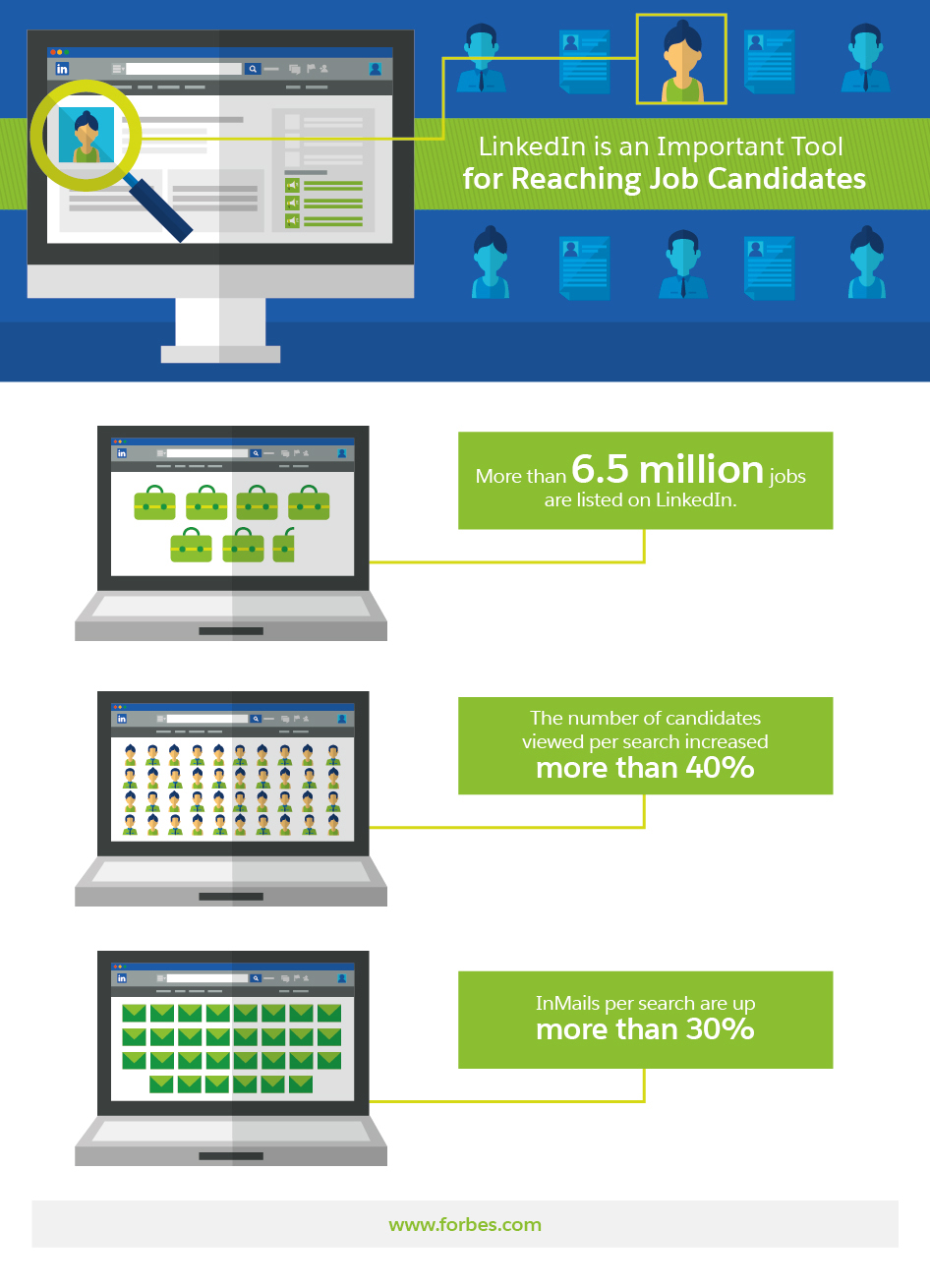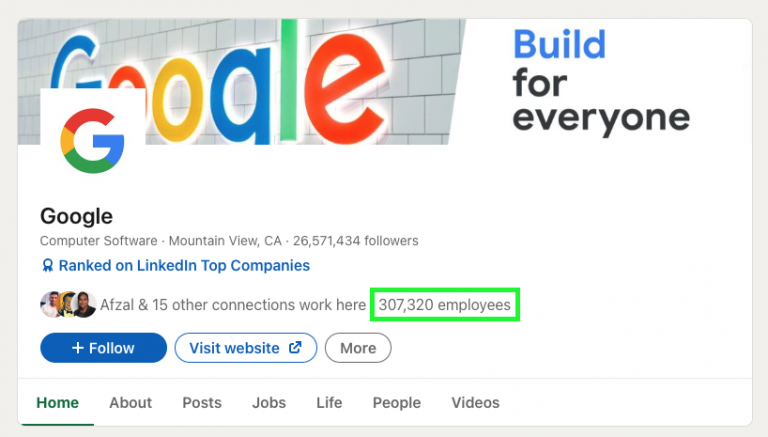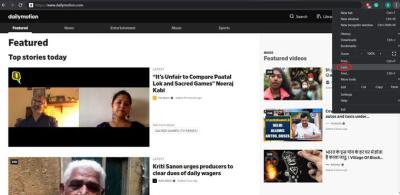LinkedIn has transformed the way we network in the professional world. Gone are the days of handing out business cards at conferences or attending local meetups to expand your circle. With just a few clicks, you can connect with professionals around the globe. This platform is particularly powerful for reconnecting with former employees or colleagues, making it a valuable tool for anyone looking to enrich their network. In this guide, we’ll explore how to effectively search for and connect with these past employees on LinkedIn, unlocking new opportunities and insights.
Understanding the Benefits of Connecting with Past Employees

Connecting with former employees on LinkedIn can be a game-changer for your career or business. Here’s why:
- Rekindle Professional Relationships: It's a great way to rekindle relationships that may have faded over time. Perhaps you shared a memorable project or were part of a crucial team; revisiting those connections can lead to collaborative opportunities.
- Industry Insights: Former employees often provide valuable insights into industry trends and changes. They can share what they’ve learned at other organizations or how the landscape in your field has evolved, giving you a critical edge.
- Job Opportunities: Many job openings are shared internally before they make it to public job boards. By connecting with former colleagues, you might get early access to job openings or even referrals.
- Mentorship Opportunities: If you had a positive experience with a former employee, they could serve as a mentor. Their guidance can be invaluable as you navigate your own career path.
- Networking Expansion: Each connection opens up new networking possibilities. Your former colleagues likely have their own connections that could be beneficial for you. This can amplify your professional circle exponentially.
- Reputation Building: Connecting with former employees allows you to keep adding to your professional credibility. Sharing insights from your previous experiences or engaging in discussions can position you as a knowledgeable industry resource.
In essence, reconnecting on LinkedIn can be a mutually beneficial endeavor. It's not just about rekindling old connections but leveraging those relationships to gain new insights and opportunities. So whether it's seeking advice, learning from their journeys, or opening doors to new roles, the benefits of reaching out are undeniably plentiful. So, how do you get started? Let's dive into the practical steps to find and connect with former employees on LinkedIn.
Also Read This: How to Post Pictures on LinkedIn for Better Engagement
3. Using LinkedIn's Search Functionality Effectively

When it comes to tracking down former colleagues or employees on LinkedIn, mastering the search functionality is key. LinkedIn has a robust search feature that can greatly simplify your quest. Let’s break down how to make the most of it!
- Use Keywords Wisely: Think about the job titles, skills, or companies associated with the individual. For example, if you're searching for an ex-team member who was a project manager at XYZ Corp, you might type “Project Manager XYZ Corp” into the search bar.
- Filters Are Your Friends: Once you get your initial search results, make use of LinkedIn's filters. You can filter by location, current company, past companies, industry, and even the school they attended. This narrows down your results significantly and increases your chances of finding the right person.
- Check Connections: If you still can’t locate someone, try looking through your existing connections. Sometimes, friends or former coworkers might be connected to the person you’re trying to find. A quick scroll through mutual connections can unearth a potential link.
- Group Search: If the person you’re looking for is in a specific industry, check out relevant groups on LinkedIn. Many professionals join groups related to their field, which can be a great way to find people who may not be directly connected to you.
- Save Your Searches: If you’re frequently searching for former employees, consider saving your searches. LinkedIn allows you to save specific searches so you can easily revisit them without starting from scratch!
By using these strategies, you can navigate LinkedIn's search functionality like a pro. The goal here is to be as specific as possible, enabling you to locate the right individuals in a sea of profiles.
Also Read This: How to Find Resume on LinkedIn: Accessing and Editing Your Resume
4. Strategies for Reaching Out to Former Employees

Once you’ve successfully located the person you want to reconnect with, it’s time to craft that initial outreach message. Knowing how to approach them can greatly increase the likelihood of a positive response. Here are some effective strategies to consider:
- Personalize Your Message: Instead of sending out a generic message, take a moment to personalize it. Mention something you enjoyed working on together or a shared experience. For example, you might say, “Hi [Name], it’s been so long! I often think about our project on [specific topic]. How have you been?”
- Be Direct: Respect your former colleague’s time by being straightforward. Let them know why you’re reaching out. Whether you're looking for a networking opportunity, advice, or simply catching up, clarity is appreciated.
- Keep It Brief: Everyone's busy, so aim to keep your message short and to the point. A few sentences can go a long way. If they’re interested in continuing the conversation, they’ll likely respond with more than enough information.
- Offer Something of Value: If appropriate, consider offering something in return. Whether it’s a piece of helpful information, a resource, or even a connection to someone in your network, providing value can help open the door to meaningful conversations.
- Be Patient: After sending your message, give them some time to respond. People often have busy schedules, and it may take a bit for them to get back to you.
By employing these strategies in your outreach, you’ll not only increase the chances of reconnecting but also set the stage for a fruitful conversation. Remember, maintaining a friendly and respectful tone is crucial, as it lays the foundation for a lasting connection.
Also Read This: Does LinkedIn Notify Users About Screenshots? Privacy Questions Answered
5. Maintaining Professional Relationships After Reconnection

Congratulations! You've successfully reconnected with a former colleague on LinkedIn. But what comes next? It's essential to nurture and maintain that professional relationship to ensure it remains beneficial for both of you. Here are some tips to help you cultivate a lasting connection:
- Stay Engaged: Regularly engage with their posts. Like, comment, or share their updates when applicable. This shows that you are interested in their content and value their insights.
- Send Periodic Messages: Don’t let your conversation dwindle! A simple message every few months to check in, share interesting articles, or ask about their latest projects can go a long way.
- Offer Help: If you come across opportunities that align with their expertise, share them! Whether it’s a job opening or a relevant article, offering to help shows that you care about their professional growth.
- Invite Them to Events: If you’re hosting or attending a professional event, consider inviting them. Networking events, conferences, or webinars can be great opportunities to catch up and strengthen your relationship.
- Celebrate Their Successes: If they achieve a new milestone, whether it's a job promotion or a completed project, reach out and congratulate them! A simple note of recognition can make a significant impact.
Building a bridge is just the beginning—making sure it doesn’t erode over time is key. Utilize these tips to foster an active, engaged professional relationship. By showing genuine interest and providing support, you can turn a mere LinkedIn connection into a valuable ally in the professional realm.
6. Conclusion and Next Steps
Reconnecting with former employees on LinkedIn can be a rewarding experience, offering countless opportunities for collaboration, mentorship, and professional growth. As you navigate this journey, remember the importance of authenticity and genuine curiosity. Here’s a quick recap of the steps we've discussed and some next actions to take:
- Gather Your List: Make a list of former colleagues you’d like to reconnect with. Keep it realistic—quality over quantity matters!
- Personalize Your Requests: When sending connection requests, tailor your message. Mention shared experiences or express what prompted the reconnection—it’ll make them more likely to accept.
- Engage Regularly: Stay active in your connections' lives by engaging with their content. Regular interaction is the lifeblood of maintaining professional relationships.
- Offer Value: Think about how you can contribute to their career growth. Whether it's sharing job leads or insights, being proactive in helping strengthens bonds.
- Reflect on Your Goals: Regularly assess why you are reconnecting and what you hope to gain from these relationships. Set personal goals for your networking efforts.
As you move forward, keep in mind that networking is not merely transactional; it’s about building meaningful connections that last. Embrace the journey, focus on quality interactions, and you’ll be surprised at the doors that can open when you invest time into fostering these professional ties. Get started today, and let's see where your relationships lead you!
 admin
admin








